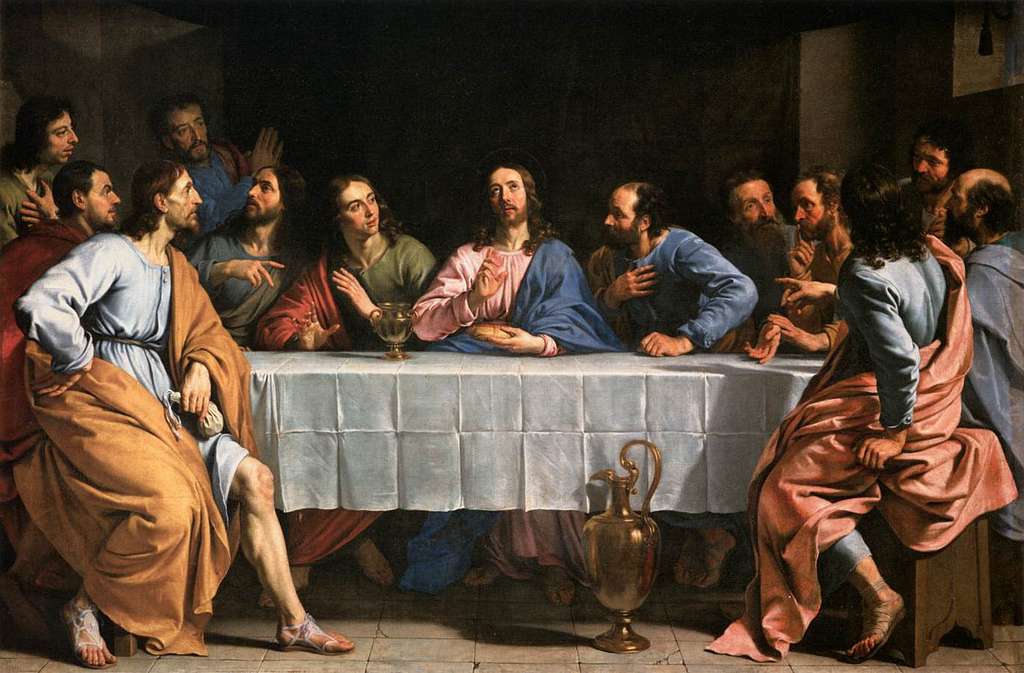| Touring the Bible at the Louvre Museum |
Religious Paintings in the Louvre : The Louvre is a living archive of human creativity, history, and devotion. Among its vast collection, religious paintings stand out as timeless masterpieces that not only showcase artistic brilliance but also capture centuries of faith, storytelling, and cultural heritage. These works of art continue to fascinate visitors, whether they are deeply religious or simply admirers of fine art.
The Significance of Religious Art in History
Throughout history, religion has been one of the strongest driving forces behind art. Before secular themes took center stage, biblical stories and spiritual symbolism inspired countless artists. Religious paintings were more than decoration; they were teaching tools, illustrating stories for audiences who often couldn’t read. Every brushstroke carried meaning, whether to glorify the divine or to remind people of morality and redemption.
The Louvre’s Religious Art Collection
The Louvre houses thousands of artworks, but its religious collection is particularly striking. From early medieval pieces to Renaissance icons and Baroque epics, the museum presents a journey through centuries of sacred art. Different styles—from Italian to French, Flemish to Spanish—blend together to showcase how faith transcended borders and influenced entire schools of painting.
Iconic Religious Paintings in the Louvre
- Leonardo da Vinci’s “The Virgin of the Rocks”
This masterpiece highlights Leonardo’s gift for blending the spiritual with the natural. With its mysterious background, delicate figures, and subtle gestures, it embodies both devotion and human intimacy.
- Caravaggio’s “Death of the Virgin”
Caravaggio’s bold realism shocked viewers when it was first unveiled. Instead of glorifying Mary’s passing, he painted it with raw humanity, making it one of the most dramatic religious works in the Louvre.
- Raphael’s “La Belle Jardinière”
Graceful and serene, this painting of the Virgin and Child reflects Raphael’s balance of divine purity and human tenderness. It remains one of the most admired religious works in the museum.
- Veronese’s “The Wedding at Cana”
Spanning an entire wall, this enormous canvas celebrates the miracle of turning water into wine. Beyond its biblical subject, it is a dazzling showcase of Venetian color and festivity.
Renaissance Religious Masterpieces
The Renaissance reshaped how religious stories were told. Artists embraced humanism, portraying biblical figures with lifelike emotions and settings. The Louvre’s collection demonstrates this shift, where sacred subjects were painted with as much humanity as divinity.
Baroque and Beyond
The Baroque period took religious art to a new level of drama and grandeur. Artists used strong contrasts of light and dark, dynamic poses, and emotional intensity to captivate viewers. Paintings like Caravaggio’s reflect this theatrical style, which sought to make faith deeply personal and visceral.
Themes in Religious Paintings
- The Virgin Mary
As one of the most recurring figures in Christian art, Mary is often depicted as a symbol of purity, compassion, and motherhood. The Louvre holds many renditions of her in moments of joy, grief, and devotion.
- Christ’s Passion
Scenes from Christ’s suffering and crucifixion are central to religious art. These depictions highlight sacrifice, redemption, and ultimate faith.
- Saints and Martyrs
The lives of saints provided powerful inspiration for painters. Their stories of courage, sacrifice, and miracles became visual lessons for believers.
- Miracles and Divine Moments
From healings to biblical wonders, miracle-themed artworks emphasize divine intervention in human life. Paintings like “The Wedding at Cana” reflect both celebration and spirituality.
Artistic Techniques and Symbolism
Artists often relied on symbolism to convey deeper meanings. Gold backgrounds suggested heavenly realms, lilies symbolized purity, and light was used to represent divine presence. Colors also held weight: blue for heaven, red for sacrifice, and white for innocence. These elements transformed paintings into visual sermons.
While Italian masters dominate, French painters also made lasting contributions. Artists like Nicolas Poussin and Georges de La Tour infused French sensitivity and style into religious art, blending classical order with spiritual depth.
Religious Paintings as Cultural Heritage
These paintings are more than relics; they are cultural milestones. They shaped Western thought, inspired generations of artists, and continue to influence modern interpretations of faith in art. Without them, the history of both religion and art would feel incomplete.
What makes these paintings so powerful is their emotional depth. Even if one isn’t religious, it’s impossible not to be moved by the expressions of hope, grief, love, and transcendence that radiate from these canvases. They remind us that art is not only about faith—it’s about humanity.
Experiencing Sacred Art at the Louvre
Religious paintings in the Louvre are more than beautiful works of art; they are windows into centuries of devotion, creativity, and storytelling. They embody both the divine and the human spirit, proving that faith and art have always been intertwined. Whether you visit the museum for its masterpieces or its history, these sacred artworks are experiences that stay with you long after you’ve left the gallery.
For visitors, exploring the Louvre’s religious collection can feel overwhelming. The key is to focus on highlights: da Vinci’s works, Caravaggio’s drama, Raphael’s grace, and Veronese’s grandeur. Taking time to study the details—the gestures, colors, and settings—can reveal hidden stories.
Christian Art Private Tour Guide at the Louvre
The placement of artworks can vary over time within the Louvre museum of Paris. You can ask a private tour guide in Paris Louvre museum or self-guided tour.
Italian & Northern Renaissance
- The Wedding at Cana (Les Noces de Cana, Veronese, 1563) – Opposite the Mona Lisa.
- The Annunciation (L’Annonciation, Rogier van der Weyden, c. 1435) – Flemish Early Renaissance, delicate and spiritual.
High Renaissance and Mannerist
- Christ and the Samaritan Woman (Le Christ et la Samaritaine, attributed to Flemish school, not exposed)
- Christ and the Woman Taken in Adultery (Le Christ et la Femme Adultère, Lorenzo Lotto).
- Jesus Driving the Merchants from the Temple (Le Christ chassant les marchands du temple 16th–17th c. Italian school, not exposed)
French Baroque & Classicism
- The Last Supper (La Petite Cène), Philippe de Champaigne – intimate devotional French Baroque masterpiece.
- Christ in the Garden of Olives (Le Christ au Jardin des Oliviers, Champaigne or Italian school, not exposed)
- Pietà of Villeneuve-lès-Avignon (La Pietà de Villeneuve-lès-Avignon, Enguerrand Quarton, 1455)
French & Italian Seventeenth Century
- Mary Magdalene (Madeleine à la veilleuse, Georges de La Tour, c. 1640).
- St. John the Baptist Preaching (Saint Jean Baptisant le Peuple, Nicolas Poussin, 1630s).
Optional: Medieval & Gothic
- Gothic reliquaries, stained glass, and devotional ivories.
- Pairs beautifully with the Quarton Pietà to show transition from medieval to Renaissance spirituality.
FAQs
1. Which is the most famous religious painting in the Louvre?
Leonardo da Vinci’s The Virgin of the Rocks is among the most renowned religious works in the Louvre.
2. Are all religious paintings in the Louvre Christian?
While most are Christian, the museum also houses some works with Islamic and ancient religious themes.
3. How old are the oldest religious paintings in the Louvre?
Some date back to the Middle Ages, while others span the Renaissance and Baroque periods.
4. Can visitors take photos of religious paintings in the Louvre?
Yes, photography is generally allowed, but without flash.
5. Why does the Louvre have so many religious artworks?
Because religion dominated European culture for centuries, many great artists created works with biblical themes, making them central to art history.
Have a private tour guide in Paris. We set your tours upon your preferences. Each trip is unique, according the profile and aspirations of each client.
Emy,


